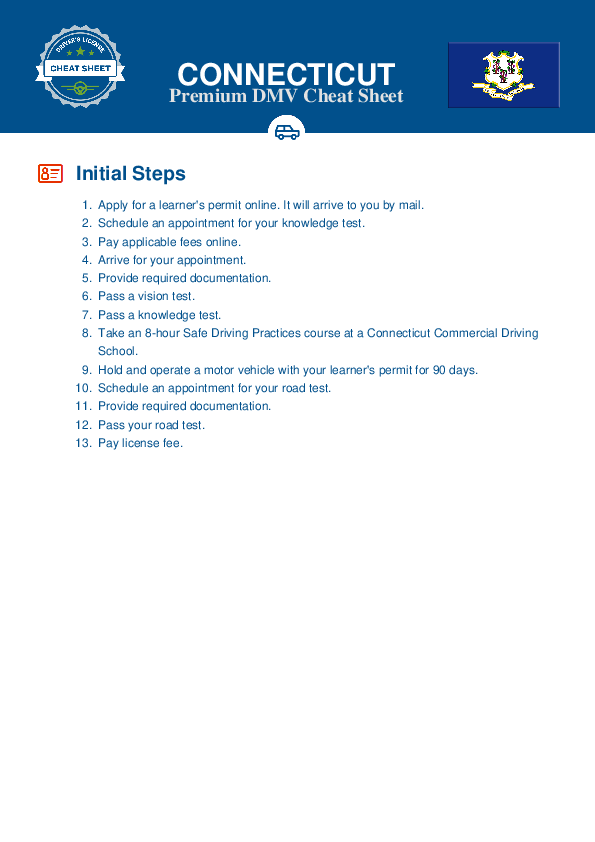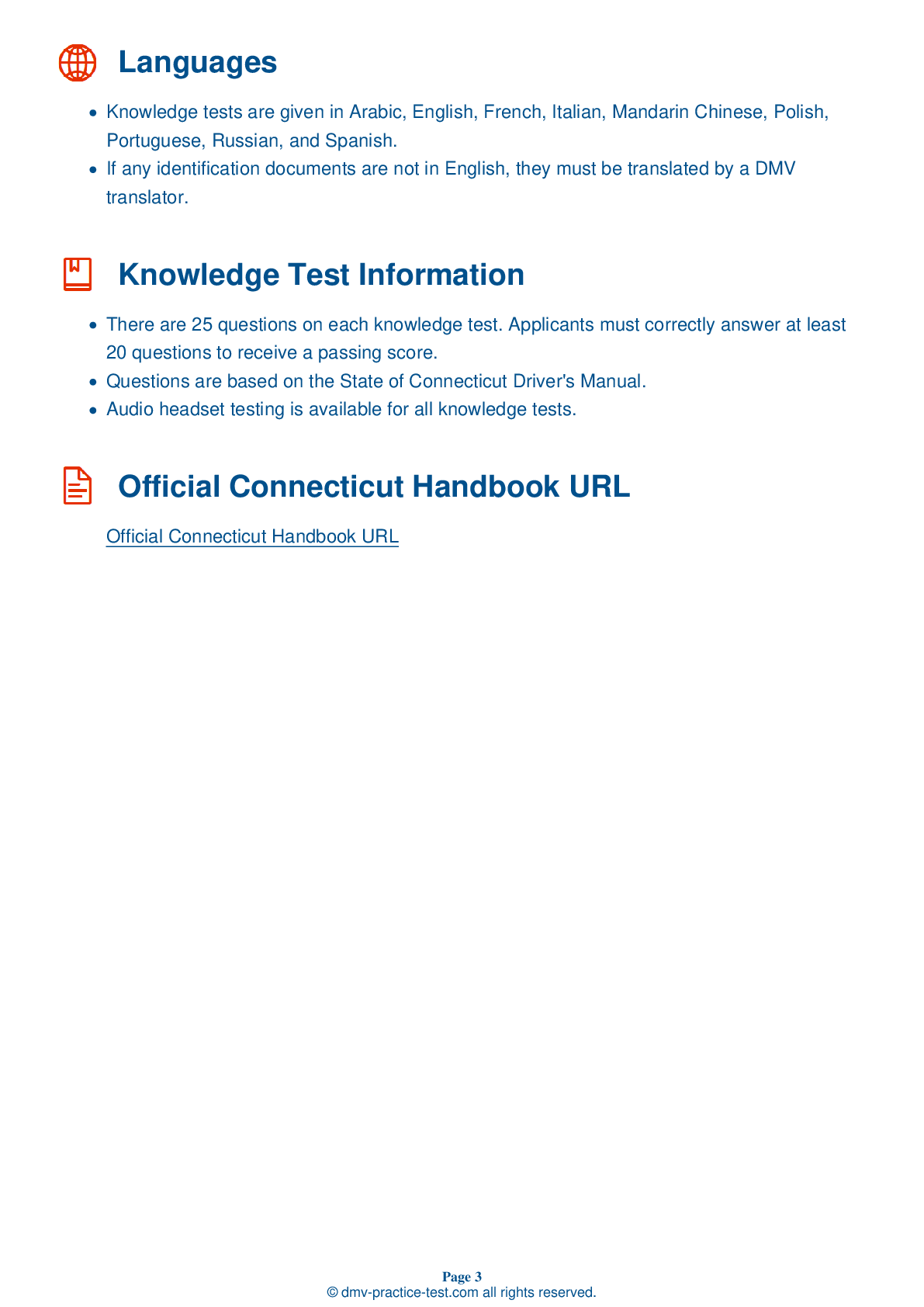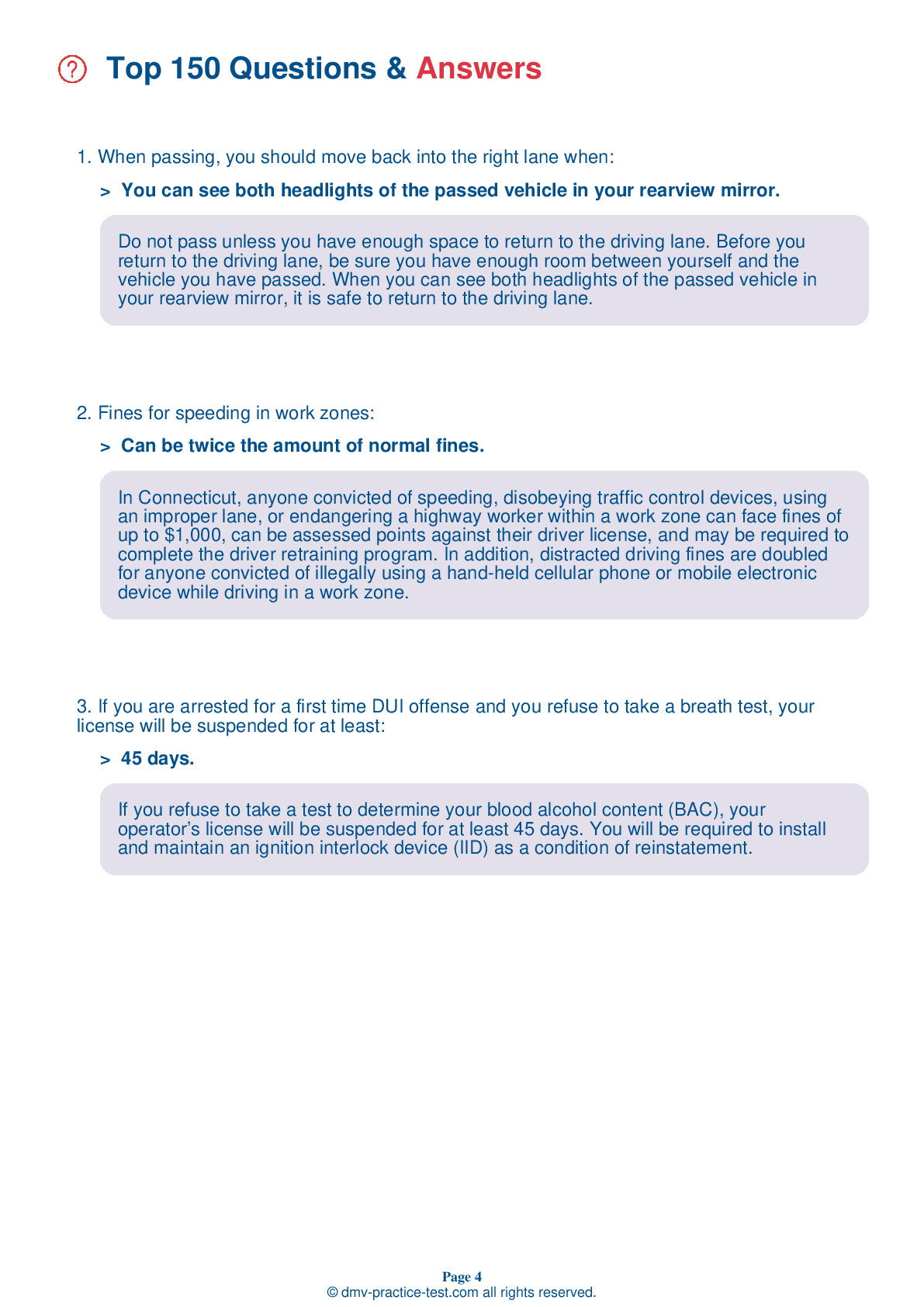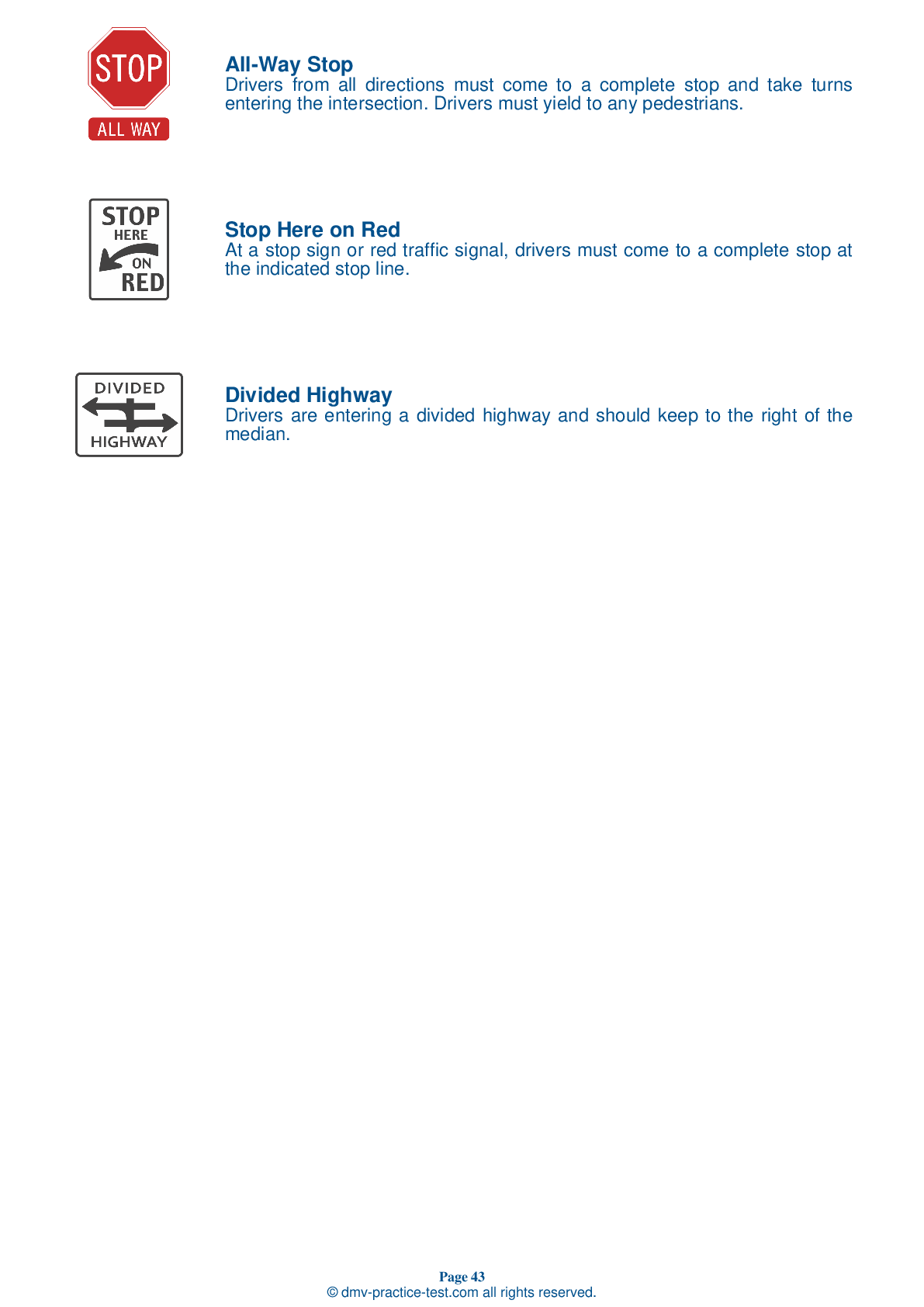FREE Connecticut DMV Practice Test #4 Page 3 of 3
This set of Connecticut DMV practise tests was just updated for January 2025. It includes questions based on the Connecticut Driver Handbook's most essential traffic signs and regulations for 2025. Use actual questions that are very similar (often identical!) to the DMV driving permit test and driver's licence exam to study for the DMV driving permit test and driver's licence exam.
Each practise test question has a hint and explanation to assist you in remembering the concepts. The written component of the official DMV test will include questions about road rules, traffic signs, and driving statutes, as well as information from the Driver Handbook.
To achieve the required passing grade, you must correctly answer 20 of the 25 questions. Take our DMV practise exam to help you prepare for your Connecticut instruction permit or driver's licence.
The DMV exam is available in several languages.
Using any form of testing help will result in an automatic fail, and the DMV may take further action against your driver's licence, so avoid it.
17 . In traffic moving at 50 to 55 mph, you are least likely to have an accident if you:
You should adjust your speed to travel smoothly with the other traffic on a roadway (provided that the other traffic is driving within the posted speed limits). Remember that vehicles moving in the same direction at the same speed cannot hit each other. Crashes involving multiple vehicles often happen when some vehicles are traveling at different speeds than others.
18 . To be able to turn quickly, your hands must be:
Both hands should be placed on opposite sides of the steering wheel. This position is comfortable and promotes safe turning on high-speed roadways.
19 . This sign indicates a:
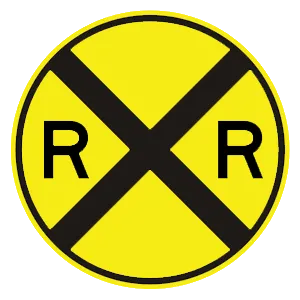
Yellow signs with black markings are used to warn drivers about upcoming hazards or special conditions. Round signs are used only to warn about upcoming railroad crossings.
20 . This sign is a warning that you are approaching:
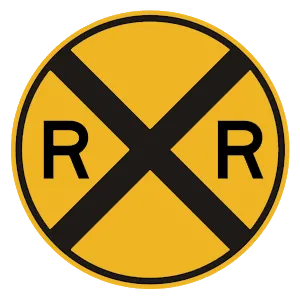
A round sign means you are approaching a railroad crossing. This sign is posted a few hundred feet in front of the tracks and tells drivers to slow down, look, listen, and prepare to stop.
21 . This sign means:
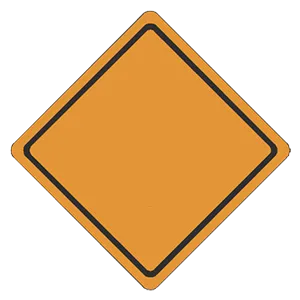
Orange, diamond-shaped signs are used to mark construction, maintenance, survey, and utility work areas. These signs help direct drivers and pedestrians safely through dangerous zones. Fines for traffic convictions may double in areas marked by these signs.
22 . The center of the roadway is marked with one solid yellow line and one broken yellow line. If the broken yellow line is directly next to your traffic lane, it means:
When there is a solid yellow line and a broken yellow line in the center of the road, passing is permitted from the side of the road next to the broken line.
23 . You exit the freeway on a ramp that curves downhill. You should:
You should always slow down before entering a curve. You may not be able to see hazards ahead and braking in a curve may cause your vehicle to skid.
24 . You should not use your horn:
When driving near a blind pedestrian, using your horn may be dangerous. Yield to the pedestrian and proceed when it is safe to do so.
25 . Double solid yellow line markings down the center of a road indicate that passing is:
A double yellow centerline means that it is prohibited for traffic from either direction to cross the centerline to pass.
See the exact questions that will be on the 2025 Connecticut DMV exam.
99.2% of people who use the cheat sheet pass the FIRST TIME
LT gives us an insight on how the cheat sheet provided her with all the study questions she needed before taking her test.
Joe initially studied with the handbook and failed his test, he eventually found us online, studied and pass his test the first time around.
